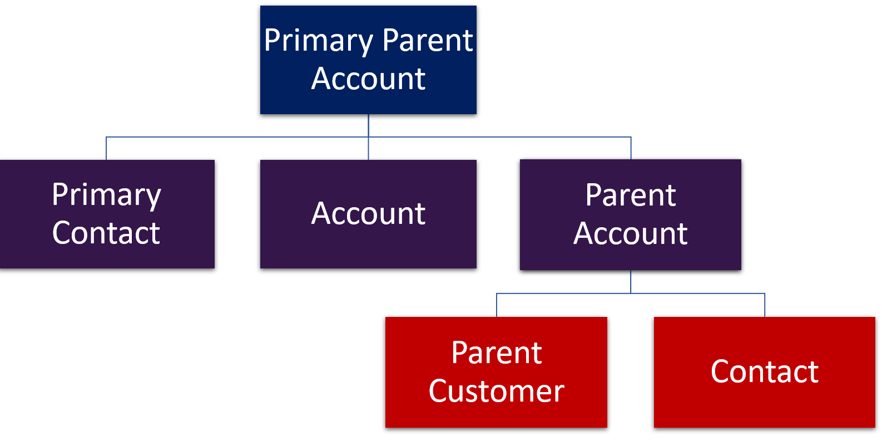Manage your customers
At the heart of all environments is keeping track of your customers. In Dynamics 365, customers are referred to as accounts and contacts. What is the difference between the two? Well, an account generally represents a company or an organization. In other words, an account is a group of people.
Contacts represents a person. An organization using accounts to represent their customers within Microsoft Dynamics 365 might decide to associate one or more contacts with an account. How can accounts and contacts be linked together? Well, the first thing to know is we can have what are called parent accounts. Often when a contact is linked directly to an account, the account is referred to as a parent account. For example, when you're trying to indicate that somebody is an employee of an account. Additionally, parent accounts can be used to link two different accounts together such as where one account is a division or a subsidiary of a parent account.
Another way accounts and contacts can be linked together is using a primary contact column. Think of the primary contact as a key contact with an organization with whom you've been in contact at a company. This person might be who you deal with for billing, sales, customer service, or any other business function that you have with that account.
It's important to know the difference between a primary contact and a regular contact. With a regular contact, it can only have one parent account, whereas with a primary contact, it can be tied to multiple accounts. Imagine you have a company that has multiple sell accounts and that company, and their sub companies are your customers. Now, perhaps the contact, regardless of whether you're talking about headquarters or any of the other subsidiaries, is the primary person you interact with when it comes to sales or billing questions. In this situation, for each account and sub account, you might have the exact same primary contact. A parent account allows you to link a contact to a parent account such as when you want to track that a person works for a company.
For more information on managing your customers, see Manage your customers.
